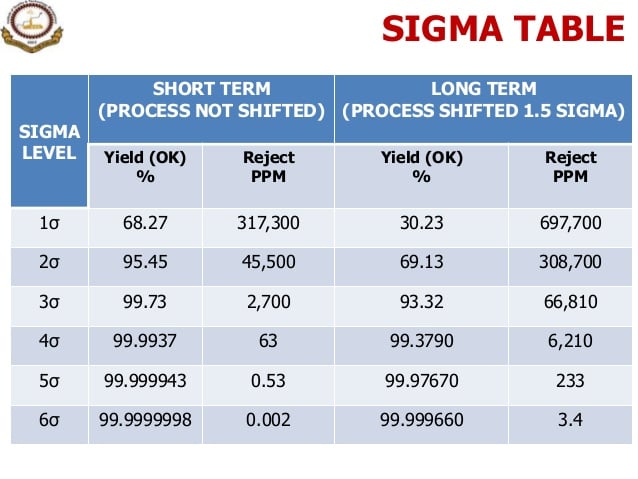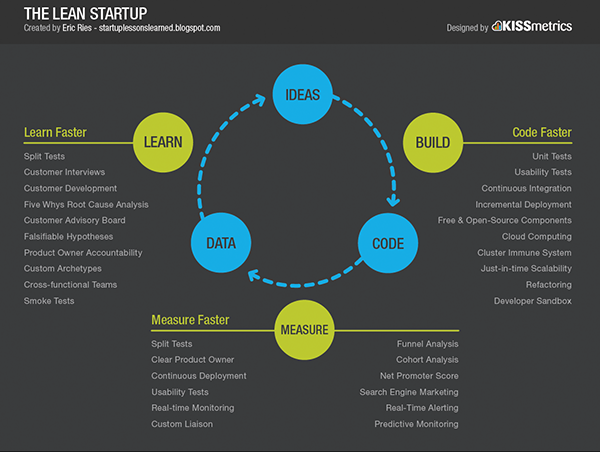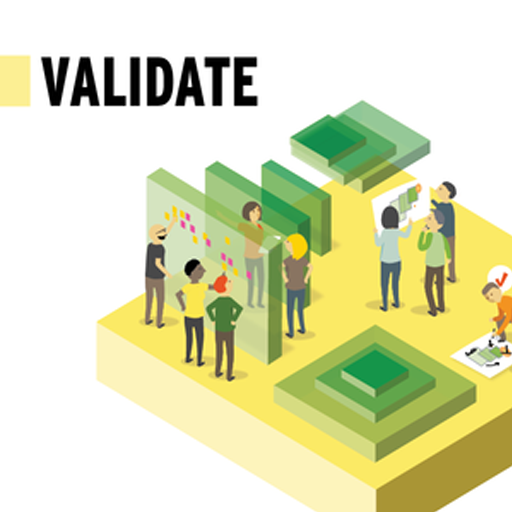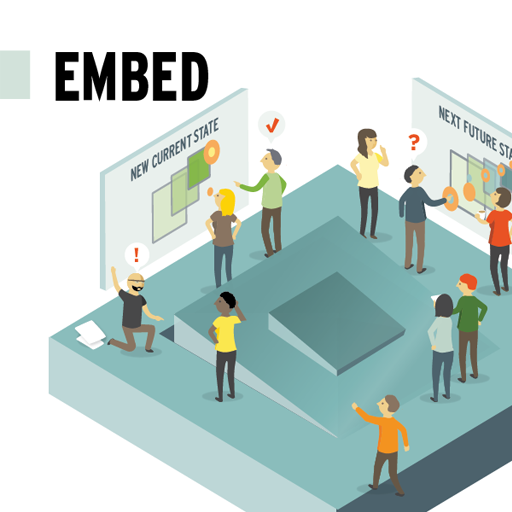
Efficiency is vital for startups to scale and survive. To be efficient you have to document your processes to make everything repeatable and scalable.
All of which means nothing if your processes are bad.
“Process innovation” is a fancy term for improving your business’ processes. Instead of haphazardly solving external issues, you focus on improving your core processes and standard operating procedures to make your business efficient and able to grow.
Most sources talk about process innovation in manufacturing or massive companies, where small efficiency boosts save untold millions. Startups are pushed to the side as an afterthought or (at best) let loose on lean and nothing more.

So, to get to the root of your problems and give yourself the smoothest path to success, I’ll highlight the six methods of process innovation you can use, and how you can use them in your business (big or small) to:
- Clearly map out your processes
- Highlight gaps in your current methods
- Boost your efficiency
- Identify your bottlenecks
- Unify your workforce under your values, mission, and goals
- Create a culture of continuous improvement
Process innovation is your key to ongoing efficiency
It’s amazing how simple concepts become bloated with jargon and lose all meaning – if not for how frustrating it is, it’d be downright comedic.

Process innovation is how you improve the way you do things in your business.
That’s it. No “re-engineering”, “business process management” or “six sigma lean” (at least, not yet), but pure and simple increased efficiency and accuracy. It can make or break startups and mega corporations alike, and it’s a process which never stops.
No matter what school of thought you pick the end result will be improving your processes. The focus, actions, and suitability of each school, however, varies enough that you need to weigh up all of your options before diving in.
Schools of process innovation
Types of process innovation tend to surge in popularity before being replaced by the next system a couple of years down the line. In a way, the methods themselves are subject to continual improvement and iteration.
The six best known types are:
- ISO 9000: A set of quality certifications designed to meet customer and company needs while maintaining a set standard.
- JIT: “Just In Time” focuses on meeting demands exactly with minimum waste of time and resources (no focus on high quality – it’s all about reducing waste).
- Lean: Popular among startups, lean attempts to create more value for customers with fewer resources by rapidly iterating then measuring the result (focus on quality, waste reduction, and quick iteration).
- Reengineering: Refocusing on customer needs and company values by completely redesigning and optimizing your processes and workflows.
- Six Sigma: Dedication to reducing the number of errors/variance in your results to 3.4 in every million or less (quality above everything else).
- Theory of Constraints: Identifying and reducing the largest constraint on your company, repeating infinitely.
- Total Quality Management: Everyone in the company becomes devoted to providing extra value to the customer, be it through different tools, extra training or another factor.
- Visual Process Innovation: A school which focuses on defining and improving your existing processes while creating an engaging, flexible, and efficient culture.
Each has different strengths, weaknesses, focuses, and effects, making them more suited to different industries.

For example, Six Sigma was a massive success in large-scale manufacturing due to its focus on reducing the number of errors and “defects” in your results. If you don’t succeed in reducing the number of errors to 3.4 in every million runs (or less), you don’t get the Six Sigma certification.
Unfortunately, the dogged persistence of consistency (focusing on customer benefits) can lead to rigidity, stifling creativity, employee discontent, and higher costs (spending more for a slight reduction in errors).
Visual process innovation guides your startup’s growth
Why the hell should startups pay attention to visual process innovation? Lean on the whole has very few disadvantages, so why worry about yet another system that’s just aimed at big companies?
Because lean is difficult to implement correctly, and only performs worse the more strictly it’s followed.
For example, quick iteration cycles are good to rapidly learn, but how do you stop yourself from slipping into normalizing deviance?

Visual process innovation does what lean’s flexibility cannot – it builds a solid foundation for your processes and culture of continuous improvement in your employees. Plus, since it focuses solely on improving your processes, you can use it in conjunction with other methods (like lean) to provide structure to their basic principles.
In other words, visual process innovation lays the structure for your other efforts (eg, lean methodology) to succeed by following five core principles:
- Visual thinking (making processes visual to reduce confusion)
- Co-creation (getting those who will use it to help create and maintain it)
- Add and eliminate (eliminating broken/redundant steps and add ones that help)
- Methodology agnostic (no process works for everyone – you need to use different tools to suit your company)
- Holistic outlook (looking at the ecosystem of processes rather than just one – change affects them all in some way)
How to make your startup more efficient
Visual process innovation is simple in theory, and easy to follow in practice. Drawing from its five core principles, five phases are put into action:
- Current state (visually mapping your current process)
- Future state (prototyping and visually mapping the improved process)
- Validate (stress testing the process and tweaking)
- Activate (deploying the process)
- Embed (checking the success of the process and improving it)
XPLANE have drawn up a wonderful ebook to explain these steps in detail, but they focus on a wider application of it to larger companies. I’ll highlight how these can be applied to your startup.
Visually map your current process

To set your foundation you first need to know where you currently stand. To do this, you need to create a visual map of the process you use now (literally draw it on paper or a whiteboard).
Start by setting your scope (the start and end of the process) and altitude (the level of detail for each step), then get to work with your visual map.
Creating this map shouldn’t be limited to your management – bring in everyone who knows the process. This is where startups have an advantage, as the lower employee count makes it easier to get a full sense of the process without meeting with hundreds of employees.
If you’re a remote team (like we are) you can do this over a Skype or Zoom call with either someone sharing their screen or using a program which lets you collaborate in real time. Getting everyone relevant to co-author the process also helps them understand the concept as a whole and engage them in improving it.
The core aim here is to know exactly what your current method is, what gaps there are in your process, what workarounds people have come to adopt, and what might be out of date. The visual element of the map means that it’s easy to spot holes and dead ends, meaning you can quickly start to fill in the gaps.
Once you’ve finished the map, walk through the process with your team to make sure that nothing’s missing. You need to have every step written down, whether it’s in your handbook or an unofficial workaround.
Create another map of the improved process

Next, you need to create another visual map for the improved version of the process. This will need a little research but is largely accomplished in the same way as your first map – get everyone relevant to the process (whether they’re in marketing or development) to contribute to the fresh version.
Focus on removing the bottlenecks from your old process and the holistic implications of your changes (as in, what else in your company will be affected by doing this).
The key here is to take into account the humans behind your processes, both by engaging them and knowing the human interactions at work for each step. Everyone needs to know what action to take, who is taking it, how it’s accomplished, and above all why they need to change.
Again, this will be easier for startups than large companies due to the limited employee number – you can realistically get everyone to work on the process and even bring in people from other disciplines to see how this will affect them.
Finally, make sure that you aren’t just going off your team’s knowledge of what could work. Look up the “best practices” in your industry and what your competition is doing – learn from what others have already tried and get inspiration for radical upgrades to your process.
Don’t scrap everything from your old process for the sake of it, though. If something worked in the old process, look at why it worked, the benefits and effects of changing it, then decide whether to keep it in your new version or to tweak it.
Stress test your new process and improve

While startups are smaller than, say, the manufacturing firms XPLANE targets with this process, it’s no less important to stress test your improvements before deploying them. This gives you room to further improve on your foundation and lets you set solid milestones and metrics for measuring the success of your new process when you deploy it.
For example, if you think changing your keyword research method is a good idea, don’t start using your new process on a high-profile ebook before trying a couple of posts first.
Doing so leaves less room for oversights between your tests and the real thing (eg, location differences or realistic timeframes). It’s a risk/reward system which is ultimately down to how thorough you can be without exposing your startup to massive failure should it fail.
If you can, it’s also a good opportunity to include some of your users in the test. You could even run it akin to an A/B test of old vs new, depending on the process you’re improving.
For a quick guide, use the following questions to create your checks and tests:
- Who is involved and how easily can they be involved?
- What’s involved in the process and can it be tested without a live environment?
- Where does it take place, and can the test reflect that?
- When does it take place, and can you replicate the timeframe?
- Why is the process being tested and what do you want to learn?
- How is it going to be tested, considering all of the above?
Once you have your test, run it using your newly mapped process, measure the appropriate metrics, and see if you need to (or can) improve anything before moving forwards. If so, consider testing it again – you can never be too sure?
Deploy the process across your startup

Processes fail when people don’t use them – usually because they don’t believe in them, that the change is required or that it will work. That’s why, when deploying your new process, you should try to engage everyone in your company in supporting it and understanding why it’s necessary.
This is another great reason for including everyone involved in creating the new process. By making them co-author the process they feel involved and have a much greater understanding of how things are changing and why.
Startups will also have a slight advantage over larger companies when doing this – the smaller team size means that there are fewer people who need to be involved and convinced. As a result, transparency and two-way communicationis easier to encourage, especially if you already have a centralized company culture and work ethic.
You can encourage engagement with the new process further by creating resources such as handbooks, ebooks, and training programs. Plus, if you make an ebook on the topic it could even be used as extra content for your audience.
In other words, you can teach your workforce and your audience about the new process/technology at the same time.
To round off the activation and deployment stage, you need to track the success of your process to make sure that your stress tests were accurate and didn’t miss any practical elements.
Measure its success and continually improve

After deploying your new process it’s time to measure its success and keep improving on what you have. This can be anything from small tweaks to stay relevant with new tools to running the entire visual process innovation method again (for the same process or a brand new one).
A great way of doing this is to encourage your team to continually make suggestions and bring up any problems they have with the process going forwards. For example, you could incentivise this by rewarding those who find changes (nothing too big, but even a shoutout on a shared Slack channel is nice once in a while).
You could also make another visual map of your organization and its current culture, including different events, the way people interact, etc. This can help you know in advance where you’re likely to encounter resistance (minor or major), where you might be able to use positive relationships, and plan for how you’ll deal with issues.
Use visual process innovation as a framework to constantly improve
Visual process innovation is a great way to form the framework for how you do things, but it leaves room for experimentation.
Each process is judged on the KPIs for that specific process, rather than solely focusing on your business or customers. This means that you can easily adopt your own take on the technique – no-one’s going to call “heresy” at you for taking a lean approach to things where appropriate.
The visual maps give you a physical (or digital) document which you can use to center yourself around your goals, mission, and values. All you need to do now is improve on what you have, increasing your efficiency and processes as you go.
How do you go about improving your processes? Let me know in the comments below!







 Workflows
Workflows Projects
Projects Data Sets
Data Sets Forms
Forms Pages
Pages Automations
Automations Analytics
Analytics Apps
Apps Integrations
Integrations
 Property management
Property management
 Human resources
Human resources
 Customer management
Customer management
 Information technology
Information technology



Ben Mulholland
Ben Mulholland is an Editor at Process Street, and winds down with a casual article or two on Mulholland Writing. Find him on Twitter here.